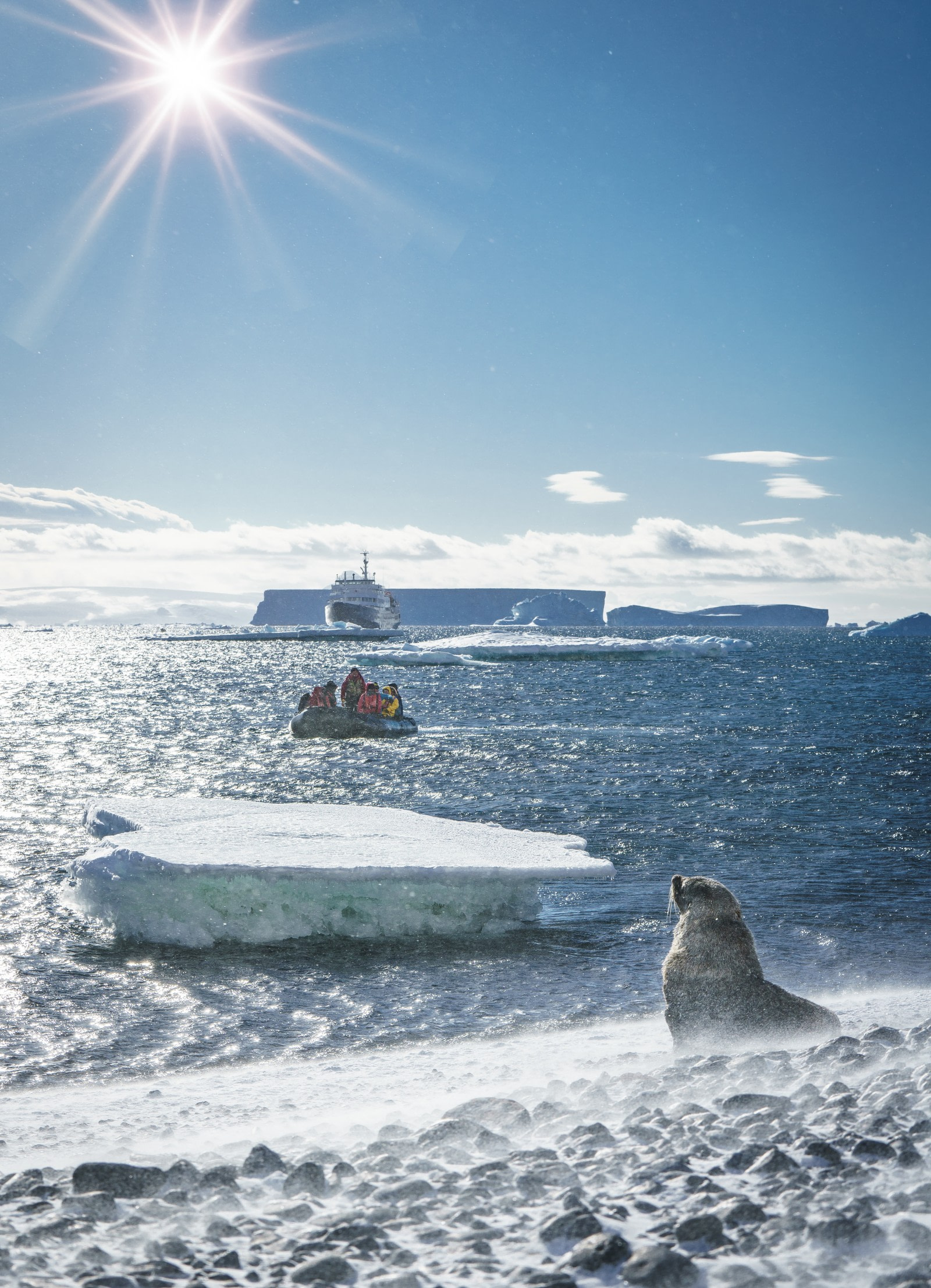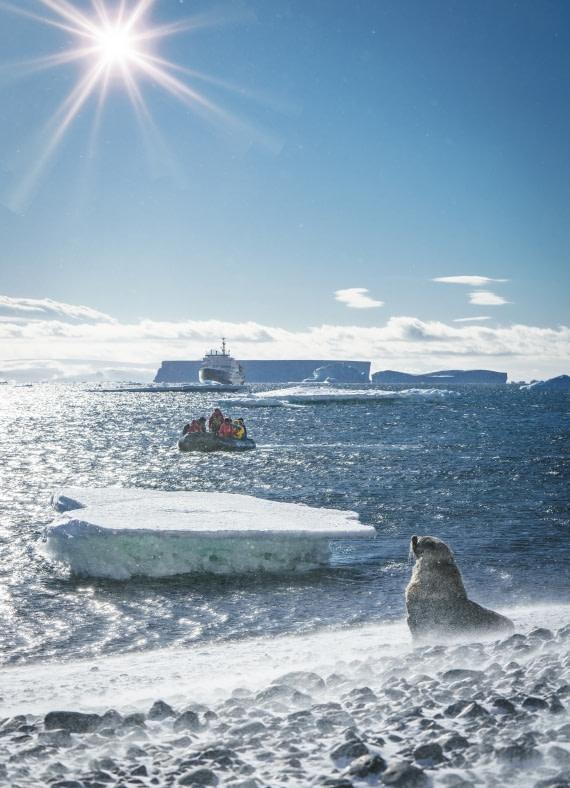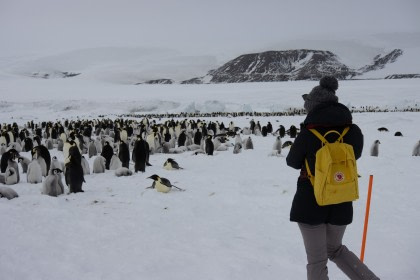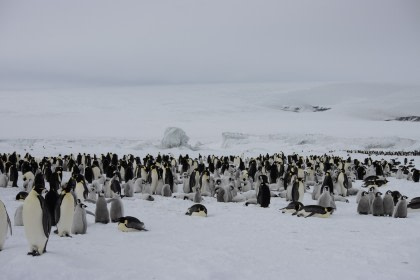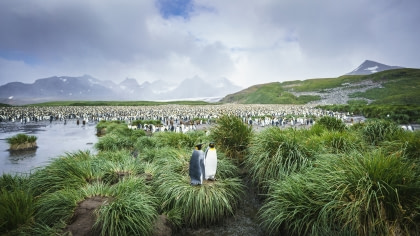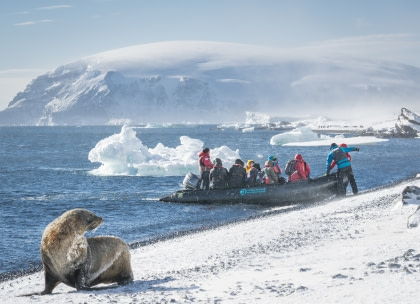The Basaltic Rocks of Brown Bluff
The cliff face is made of rust-colored basaltic tuff, rocks that about one million years ago were part of a huge volcano with a diameter of more than 12 km (7.5 miles). Brown Bluff is part of the Antarctic Continent and is a popular destination on Weddell Sea voyages.

Brown Bluff Beaches
Below the cliff lies a 3-km-long (2 miles) beach that is blocked on both sides by large glaciers spilling into the adjacent sea, delivering bergs and brash ice (fragments of small floating ice) that sometimes block off access to Brown Bluff. The coast is also very exposed to wind, waves, and tidal currents, so landing (and leaving) can be difficult.

The Bird Life of Brown Bluff
Snow petrels and Cape petrels breed on the lower slopes of the cliff. Above the rocky beach, an extensive Adélie penguin rookery with about 20,000 breeding pairs can be seen, along with a smaller gentoo penguin rookery of about 600 pairs. Leopard seals often patrol Brown Bluff's coast to hunt penguins, and whales frequently pass through the Antarctic Sound.

